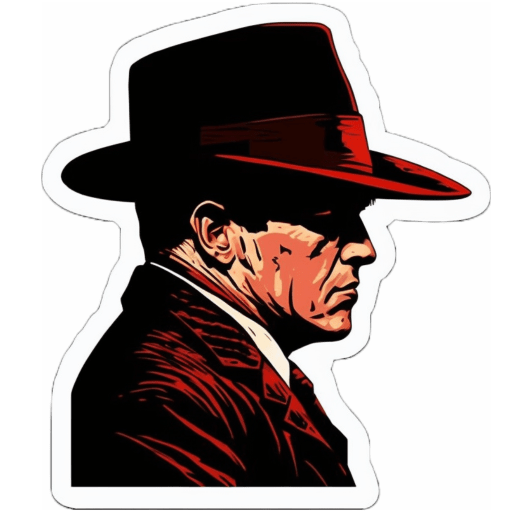Salvatore “Teddy” Azzarella was born September 29, 1904 in Ohio to Paul and Angela (Jennaro) Azzarella. His father died October 1905. Teddy was the youngest of four siblings: Mary, Charles, Joseph and Ted. The family home was at 163 Detroit in the heart of the Third Ward.
Teddy’s brother Joseph was a boxer and boxing trainer. He also was busted for gambling several times, and with practically every known gambler in Milwaukee. But we’ve had enough gambling lately, so let’s just focus on Teddy.
Bootlegger Joe Pessin’s malt and hop shop had its windows shot out by a passing automobile in March 1928. Pessin suspected Teddy Azzarella, who had recently threatened him.
November 1928: Teddy was caught in a barn distillery at Kilbourn (Juneau County) that authorities said had $75,000 worth of booze inside. Caught with him were Arnold Zellin, John Schmitzke, Herman Gordon, Louis Schirl and Michael DePalma. They were released on $2,000 bond each, furnished by Sol Marachowsky of Portage and Leo Feinberg of Baraboo. This operation was later said to be part of Juneau Sheriff Lyall Wright’s massive liquor conspiracy. The money for the big illegal still came from Al Diamond (real name Aaron L. Domnitz).
Teddy pleaded guilty and his sentence was delayed until November 1929 – a year after he was caught. The sentence was delayed again when Teddy agreed to be a witness at the trial of District Attorney Clinton Price, who was allegedly in on the conspiracy. Price was acquitted in March 1930, and on April 10, Teddy was sentenced to 60 days in jail and a $300 fine. He was to turn himself in within two weeks. Wright received a similar two-week delay.
On April 13, 1930, Clinton Price was badly wounded at his house in Mauston, Wisconsin, when he was shot by an assailant. Price died early on April 14, 1930, at a hospital in Mauston while undergoing surgery. Convicted sheriff Lyall Wright, on the same jail delay as Azzarella, was the top suspect.
April 16, 1930: Deputy Sheriff Edwin Kuska went to Milwaukee to question Teddy and Mike DePalma about the “death gun.” Wright was held for trial on the murder, but acquitted.
April 25, 1930: Teddy, along with bootleggers Stanley Smitzky and Matt Neisen, surrendered to authorities in Dane County for liquor law violations. They spent the weekend in the Dane County jail before they were transported to Milwaukee by US Marshal Charles Rawlinson to serve sentence in the House of Correction.
Teddy Azzarella threatened Joe Pessin again on March 4, 1933, asking for a cut of profits from an alleged still. The next day, a bomb consisting of five sticks of dynamite was found on Pessin’s doorstep. A fuse had burned but the blasting cap was defective.
Teddy was arrested December 6, 1933 on a vagrancy charge and labeled by police as a “public enemy,” along with Benedetto deNicola and Angelo LaBarbera. A policeman said the men were acting suspiciously in the vicinity of a wine distributor. They were found guilty in district court on December 14, 1933. Judge A. J. Hedding sentenced the men to 90 days in the Milwaukee House of Correction. LaBarbera was later released and charges dropped when witnesses verified he had been employed since October and was not a vagrant.
Side note: Lyall Wright met and solicited bank robbery from Sam (later called “Mad Sam”) DeStefano and his brother Mike DeStefano of the infamous “42” gang. Nine men were convicted in the 1933 robbery of the New Lisbon State Bank, while one was never caught. About half were tied to the Chicago Outfit, with Wright as the ringleader. Wright would spent most of his life in prison for robbery.
After a complaint from tavern operator Mae Yager (whose pub was at the corner of Highways 100 and 41), various people were taken in for questioning on April 6, 1940. She claimed to have received a phone call threatening to bomb her home unless she paid $80 protection money. Detectives had her give the money in an envelope and then nabbed the man as he left the tavern. Two others, Harry DeAngelo and Michael Albano, waiting in a car outside, were later caught after running the car’s license plate. Questioning them lead to the arrests of still five more: public enemy Teddy Azzarella; Rocco Joe Maglio; Victoria Ruskin; Peter Balistrieri; Jack Enea; Nick Vicenti; Frank Joseph Maniaci; John D’Amore; Tom Albano; Frank Leo Sansone; Gretchen Jeanette Kniebes; Cosimo Samuel DiSalvo; Dominic Paul “Jack” Rizzo, and Ann Jul Brandt. Attorney Mario Megna got charges against Maglio dropped, but Ruskin (Azzarella’s girlfriend) was ordered to leave town within 24 hours. Rizzo and Brandt were also arrested on charges of lewd and lascivious behavior. (It is unclear why.)
On 1940 US Census, Teddy is living with his sister and her husband, listed as “unable to work.” On his WWII draft (September 1942), listed as a “retail manager,” separated, with no children.
In 1940, Teddy lived with his brother and claimed no employment.
September 15, 1942, Teddy enlisted in the US Army as a private. By this point he had separated from his wife; they had no children.
On May 15, 1957, Angela Azzarella (Teddy’s mother) passed away at age 82.
Teddy Azzarella, 62, died on November 16 and was buried on November 19, 1966. He was a small-time gambler who took bets at his home at 509 West Keefe Street. The FBI speculated that some of his profits may have been “sent up” to mob bosses. Guardalabene and Amato handled the funeral with burial in Holy Cross. He left behind his wife Mary and siblings Charles, Joseph and Mary.
